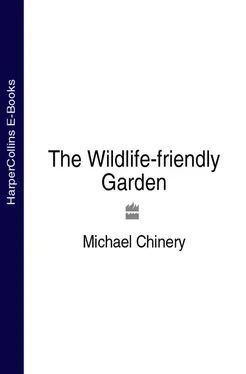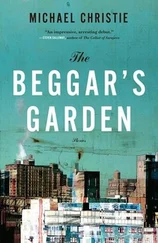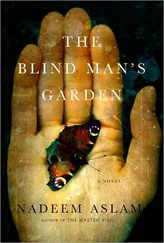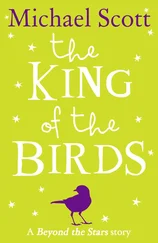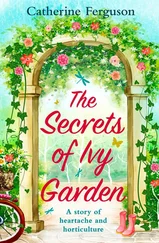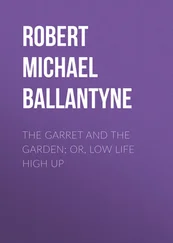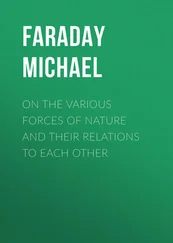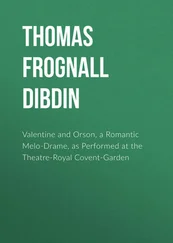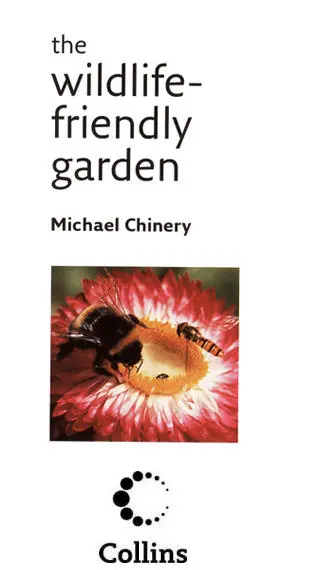
Cover
Title Page
The Garden Habitat PART ONE
Garden diversity Garden diversity Although I have referred to the garden as a single habitat, on a par with a woodland or a meadow, most gardens are really very complex mixtures of habitats, each supporting its own rich assemblage of plant and animal life .
Wildlife-friendly gardens Wildlife-friendly gardens Gardening for wildlife involves creating an approximation to one or more natural habitats that will be acceptable to birds and other wild creatures. It does not mean, however, giving the whole garden over to nature. You can continue to grow all your favourite flowers and vegetables in a wildlife garden . Although a large garden can obviously support more plant and animal life than a small one, size is not that important. Even a small garden can contain several valuable wildlife habitats, such as a hedge, a small spinney or shrubbery, a pond and a grassy bank. It is what you plant in your garden that matters. Cultivated varieties and exotic plants certainly have a role in adding colour and excitement to a garden, but to be really wildlife friendly you do need to grow a selection of native shrubs and other plants. These are the species on which our native insects have evolved, and if you provide food for the insects, then you will indirectly feed many of our garden birds as well. Having created habitats for the insects and birds, you will need to minimize any disturbance. So be a little less enthusiastic with the lawn mower and the hedge trimmer. Does your lawn really need to look like a bowling green, and does it matter if the hedge is a bit rough around the edges? Don’t be tempted to dead-head all of your plants; this might encourage a longer flowering season but it does deprive birds and insects of food and shelter. Bare soil needs weeding, so cover your garden with as much vegetation as you can; this will keep down the weeds and also give the birds a happy hunting ground. You might well find that wildlife-friendly gardening is gardener friendly as well! Michael Chinery The rough grass at the base of the wall in no way detracts from the appearance of this well-managed wildlife garden .
Planning your garden Planning your garden An abandoned garden soon becomes clothed with nettles, brambles and other invasive plants. Birds and some other animals may appreciate such a wilderness, but your neighbours certainly will not. Diversity is also lost. Good wildlife gardens are planned, not abandoned . A wilderness and a wildlife garden are not the same! A wilderness, often defined as a wild and confused mass of vegetation, certainly does not exhibit the variety at the heart of a wildlife garden. It may have advantages for some animals, including the hedgehog and various birds, and there may be short-term advantages for some insects but, if left untouched, the wilderness will succumb to the processes of natural succession and will turn into woodland in 20 years or so. If you want a garden wilderness, restrict it to a particular area and be prepared to tame it occasionally. And plan the rest of your wildlife garden carefully to make the best use of the available space. Colin Varndell A planned garden does not have to be very formal. The position of this garden pond was actually carefully planned, but the plantlife gives it a wonderfully wild and natural appearance . The wildlife garden cannot be ideal for everything; it has to be a compromise. However, by growing lots of different plants you can create wonderful wildlife homes and still have some room for your favourite flowers and vegetables. And you can do this even in a small garden.
A wildlife meadow A wildlife meadow In the middle of the twentieth century, flower-rich meadows could be found in many parts of Britain, but less than two per cent of the meadows that delighted us in the 1940s survive today. Unfortunately, we cannot put them back, but every little helps and a flowery lawn in your garden is a good start . Put your mower away for a few weeks and you will certainly get some new flowers on your lawn, but unless your garden is on a chalk or limestone slope you probably will not grow much more than dandelions and daisies initially. To create a good flower-rich habitat you will have to introduce most of the flowers. Scattering seeds into an existing lawn is not likely to achieve very much because the grasses will swamp the young seedlings, although you can increase their chances by removing the turf from small areas before sowing. Therefore a better way is to stick established plants into your lawn, but even then they are likely to be overshadowed. The best approach of all is to strip all the turf and much of the top-soil away and then re-seed the ground with a mixture of grass and flower seeds. Make sure that the grass mixture does not include rye grass, which is too vigorous for a wildflower meadow. Michael Chinery Abandon your mower and you will soon acquire a grassland jungle similar to this, where field mouse-ear and bird’s-foot trefoil are flowering below the thistles and tall flower-heads of the grasses . Do not be tempted to sow too many species in a new lawn: four or five grasses and half a dozen flower species are plenty. Spread the grass seeds evenly over the area, but for a natural appearance the flower seeds should be sown in drifts of just two or three species. Never add any fertilizer to your meadow – this will merely encourage the grasses to grow and overshadow the other plants.
The garden hedge The gardens hedge Most houses come complete with some sort of boundary feature – a hedge or a wall if you are lucky, but more often a relatively barren wooden fence. Although walls and fences can support a limited range of plant and animal life, a mature hedgerow is a thriving community, teeming with insects and other animals. At the same time it can give you privacy and protect your garden from the wind . You could consider enriching your garden by replacing your fence with a hedge, but only if the neighbours agree! Alternatively, you could plant a low hedge inside your boundary or instal one as the garden equivalent of a room-divider – separating your vegetables from your flower beds perhaps. Hedges are very cheap to create, although they do need more maintenance than walls and fences. Michael Chinery The nests of caterpillars of the small eggar moth were once common on roadside hawthorn hedges, but mechanical trimming in summer has caused the species to become rare. Garden hedges may be its salvation . Michael Chinery Although it is very conspicuous when viewed on a bare twig, the 10cm (4in) caterpillar of the privet hawkmoth is surprisingly hard to spot in a privet hedge .
Wildlife walls Wildlife walls Although, as a home for wildlife, a hedge beats a wall every time, there is still a place for a wall in a wildlife garden. This is particularly true on sloping ground, where small walls, no more than a metre (three feet) or so high, can be used to create a very attractive terraced effect . You don’t need to be an expert bricklayer; in fact, you don’t really need bricks at all. You can try building a dry stone wall, using one of the many traditional styles that are found in upland Britain. Always use local stone if possible, as this fits into the landscape so much better than alien material. You may be able to buy large stones from a local quarry or a nearby garden centre. Failing this, get hold of The Natural Stone Directory ( see here ) which will tell you where you can buy almost every kind of stone. CONSERVATION TIP Never be tempted to buy water-worn limestone, often sold as Westmorland stone. It should not be for sale anyway, as it comes from one of our rarest habitats – the much-damaged limestone pavements of northern Britain – which are now protected by law. Michael Chinery This section of a dry stone wall shows the large through stones which are used to tie the two faces of the wall together. The central cavity can be filled with soil or small stones .
Читать дальше
